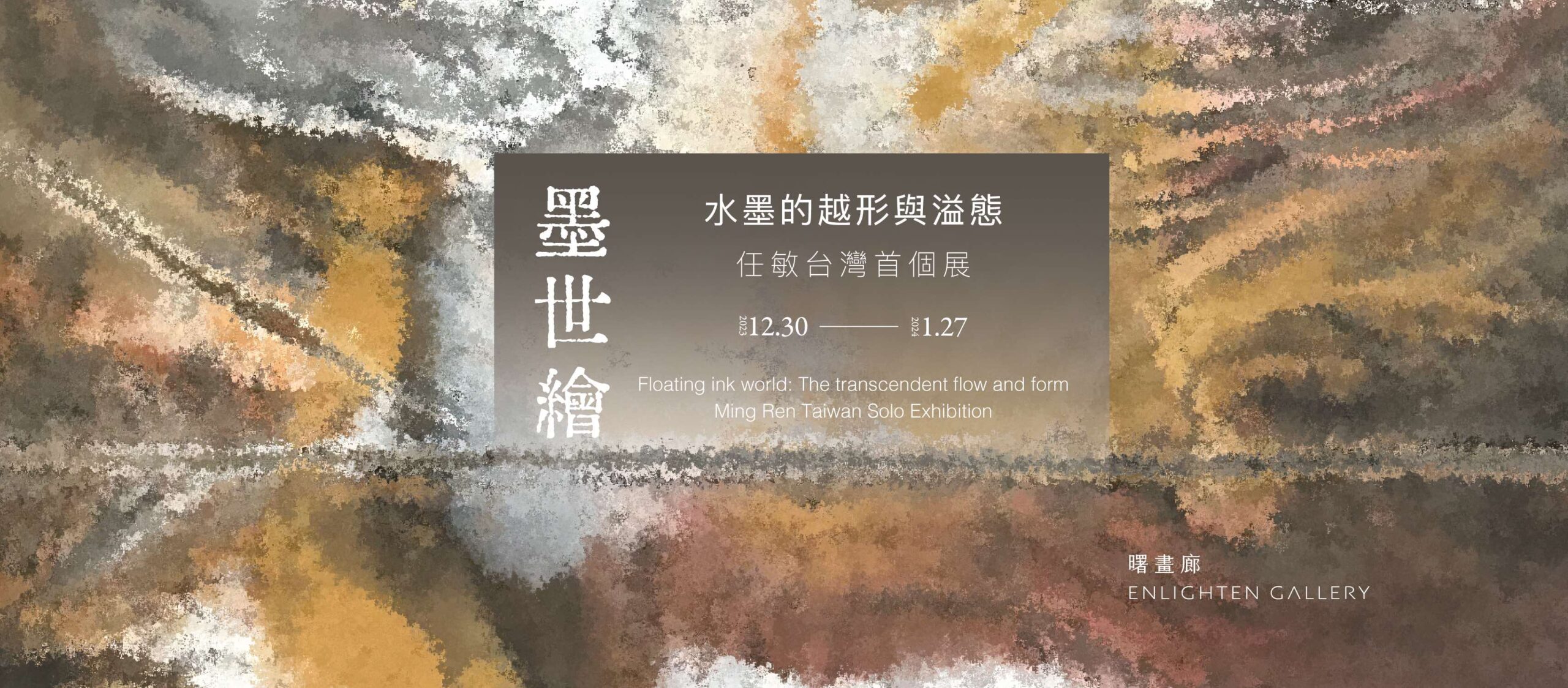
19 Dec Floating ink world:The transcendent flow and form—— Ming Ren Taiwan Solo Exhibition
Resplendent Ink Blossoms: The Vital Spirit in Ming Ren’s Paintings
Transitioning from classical and representational to abstract, and blending influences from China, America, and Europe, Ming Ren, who teaches at the San Francisco Art Department, has demonstrated vibrant energy and forward-thinking artistic achievements throughout his career. His accomplishments have earned him the Gold Prize at the Florence International Biennale of Modern Art in Italy, along with high acclaim both domestically and internationally. Renowned art historian Shen Kuiyi has praised Ren’s experimental works for expanding the potential of traditional Chinese ink painting.
Initially, Ming Ren used oil painting as his medium of choice. However, after the year 2000, he returned to Chinese art, marking a new phase in his career characterized by maturity and international standards. The paintings in this exhibition are the result of this transformative period. Ren’s style, akin to Abstract Expressionism, aligns with Kandinsky’s concept of “the inner spiritual essence of nature” and Matisse’s notion of liberating art from the external forms of objects. This approach signifies the artist’s dissolution of objective world representations within painting traditions.
Ming Ren’s work is often likened to a “fluid,” both in terms of style and developmental trajectory, reflecting dynamic motion and defying conventional norms. His style embodies an “overflowing state” and a “transcendence of form,” crossing boundaries. Although his works are abstract, they are not purely rooted in Western traditions. Techniques like dripping, splashing, and spraying evoke the Chinese art principle of “expressing ideas rather than forms.” Thus, his painting titles, such as “Armor,” “Copper Wall,” and “Universe,” describe tangible objects and spaces, while others like “Wandering,” “Flowing Time,” and “Subtle” explore invisible states, manifesting the artist’s spiritual perception.
Chinese philosophy often uses the concept of “qi,” the life force, to understand the energy of the universe. Similarly, the revered art principle “vivid spirit” (qiyun shengdong) emphasizes the dynamic vitality in Ren’s works. Through fluid ink techniques, Ren’s paintings convey spatial, temporal, and musical qualities. Critics frequently associate his art with “qi,” highlighting the latent energy within his paintings. Many of Ren’s grand compositions corroborate this idea, directly relating to themes like “collision and fusion” and “aggregation and dispersion.” His works transcend mere rhythmic or emotional “vivid spirit,” instead transforming into “qi yun,” an inner kinetic energy that vividly captures the flow of time, life breath, and consciousness.
Abstract Expressionist master Jackson Pollock once said in a Zen-like manner, “I do not fear changes or the destruction of the image because painting has its own life. I try to let this life force come through.” Ming Ren inherits this ethos in his spontaneous techniques, echoing and reinventing the path of Western modern art. By doing so, he explores the possibilities of existence, creative imagery, and the vitality of Chinese painting. His works in this “Floating Ink World” exhibition clearly demonstrate his grand ambition.
